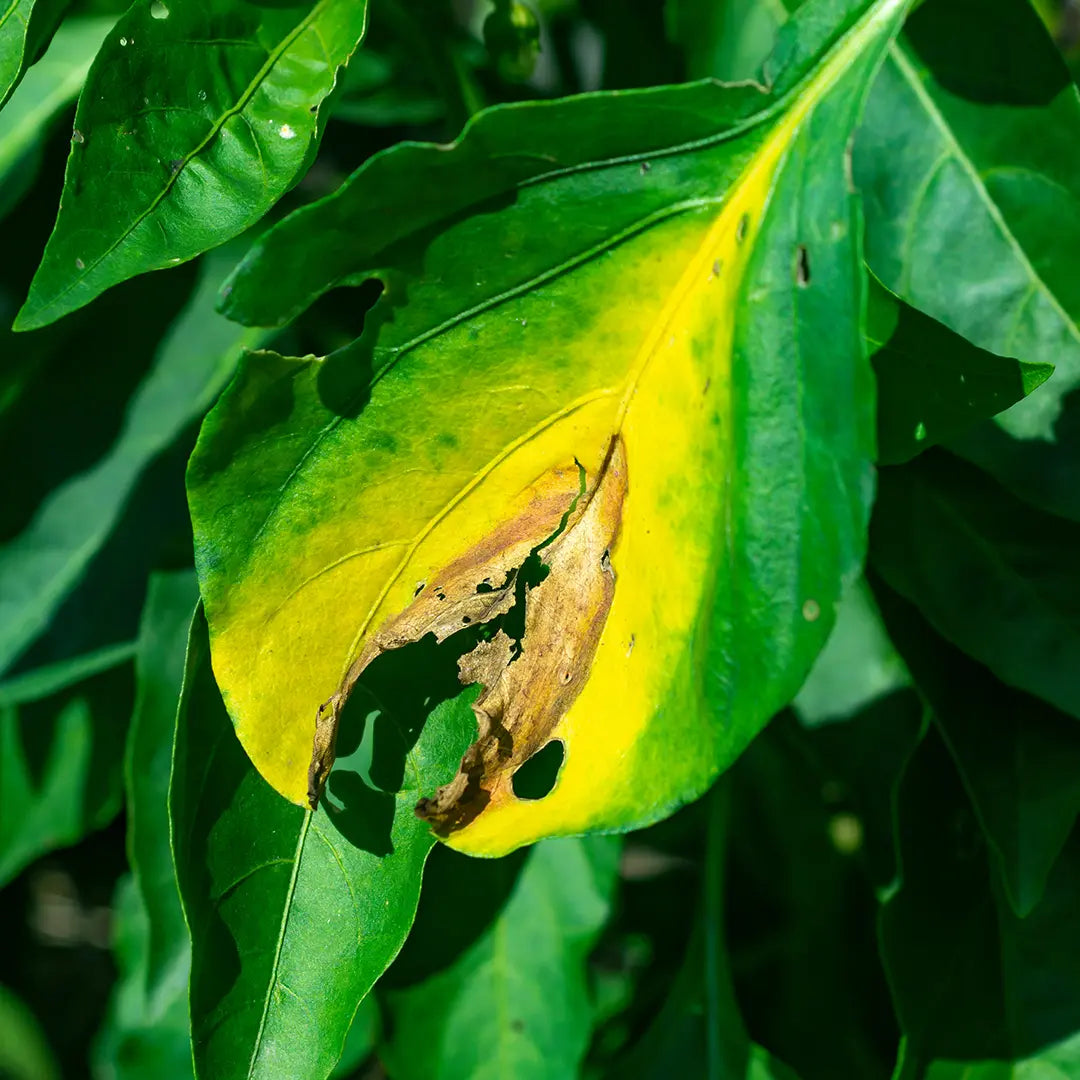
Phytophthora Blight
At Ignition Seeds, we're committed to providing you with the knowledge and tools to help your chilli plants thrive. One common problem that chilli growers face is Phytophthora blight, a devastating disease that can wreak havoc on your plants. In this guide, we'll explore the identification, symptoms, prevention, and management of Phytophthora blight to help you keep your chilli plants healthy and productive.
Collapsible content
Identification
Phytophthora blight, caused by the oomycete pathogen Phytophthora capsici, is a serious disease affecting chilli plants. This soil-borne pathogen thrives in wet and warm conditions, making it especially problematic during New Zealand's humid summer months (December to February).
Identification of Phytophthora blight is crucial for prompt treatment and prevention of further spread. It's important to be aware of the environmental factors that favour the pathogen's growth, such as poorly drained soils, excess moisture, and warm temperatures. The disease can spread rapidly, infecting both the roots and above-ground parts of the plant, including leaves, stems, and fruits.
To identify Phytophthora blight, keep an eye out for the following signs:
- Water-soaked lesions on leaves and stems: Initially, these lesions may appear as small, water-soaked spots that expand rapidly. As the disease progresses, the infected tissues become soft and mushy, often emitting a foul smell.
- Wilted and discoloured leaves: Infected leaves may turn yellow, curl, and eventually wilt. In severe cases, the entire plant may wilt and collapse.
- Rotted fruits: The pathogen can also infect chilli fruits, leading to soft, sunken, water-soaked areas on their surfaces. As the disease advances, the infected fruits become covered with a white, cottony growth (sporangia) containing the pathogen's spores.
- Root and crown rot: In some cases, Phytophthora blight can cause the roots and the crown of the plant to rot, leading to plant death.
Symptoms
Phytophthora blight can cause a range of symptoms in chilli plants, varying in severity depending on the environmental conditions and the stage of infection. Some common symptoms include:
- Lesions on leaves and stems: One of the first symptoms of Phytophthora blight is the appearance of small, water-soaked lesions on leaves and stems. These lesions rapidly enlarge and merge, leading to the collapse of the infected tissue.
- Leaf yellowing and wilting: As the disease progresses, the leaves may turn yellow and wilt. In severe cases, the entire plant can wilt and die.
- Fruit rot: Infected fruits may display water-soaked, sunken areas on their surfaces. As the disease advances, a white, cottony growth appears on the infected fruits, indicating the presence of the pathogen's spores.
- Root and crown rot: In some cases, the roots and crown of the chilli plant may rot, causing the plant to collapse and die.
Prevention and Management
Prevention and management of Phytophthora blight involve a combination of cultural, chemical, and biological control methods. Here are some strategies to help you protect your chilli plants:
- Site selection: Choose a well-drained location for your chilli plants, as poorly drained soils can increase the risk of Phytophthora blight. Raised beds can also help improve drainage and reduce the risk of infection.
- Crop rotation: Practice crop rotation with non-susceptible plants to reduce the build-up of the pathogen in the soil. Avoid planting chilli plants in the same location for at least three years.
- Resistant cultivars: Whenever possible, choose chilli cultivars that are resistant or tolerant to Phytophthora blight. Consult seed suppliers or local extension services for information on suitable varieties.
- Sanitation: Regularly remove and destroy infected plant material to reduce the spread of the disease. Clean and sterilise tools and equipment to prevent contamination.
- Irrigation management: Avoid overwatering, and water your plants early in the day to allow the foliage to dry before nightfall. Drip irrigation can help minimise leaf wetness and reduce disease incidence.
- Mulching: Apply a layer of organic mulch around the base of your chilli plants to reduce soil splash and minimise the spread of the pathogen.
- Biological control: Beneficial microbes, such as Trichoderma and Bacillus species, can help suppress Phytophthora blight. These biocontrol agents can be incorporated into the soil or applied as a foliar spray.
- Chemical control: Fungicides can help manage Phytophthora blight, but their effectiveness depends on proper timing and application. Consult your local extension service for recommendations on suitable products and application rates.
In conclusion, Phytophthora blight is a significant threat to chilli plants in New Zealand. By understanding the identification, symptoms, prevention, and management of this disease, you can take the necessary steps to protect your plants and ensure a healthy, productive harvest. Remember to follow best practices for plant care, including selecting well-drained sites, practising crop rotation, and using resistant cultivars to minimise the risk of infection. With careful attention and appropriate management strategies, you can keep Phytophthora blight at bay and enjoy a bountiful chilli crop.
